Machine learning programming languages has grown in popularity in recent years. While it is an old discipline, almost as old as computer science itself, it has only recently become popular and commonplace. Low-level machine learning programming languages. are often thought to be more difficult to learn and utilize. They do, however, provide a significant benefit in terms of speed and efficiency.
Training speed is critical in machine learning programming languages because simple processes are repeated millions of times on enormous datasets. Slightly quicker procedures can be the difference between training in a matter of minutes and training that takes hours, days, or even weeks. R, C++, and Java are the most popular low-level machine learning programming languages.
This is due to the abundance of data and computing power available for training. It has also become a lucrative specialization for software engineers, and this article will provide an overview of the Machine learning programming languages.
What Is Machine Learning?
Machine learning is a contemporary science that uses statistics, algorithms, and probability to extract the best information from data and provide insightful information that can be used to construct intelligent applications. As an important component of AI, it contains a pool of algorithms and methods for connecting data based on patterns and analytical approaches.
Machine learning programming languages focuses on pattern identification, predictive analytics, and data mining, and it is closely related to big data and data analytics. Through mathematical models and superior predictive statistics, it has the potential to enable robots to emulate human decision-making. There are three forms of machine learning: supervised (based on labeled data), unsupervised (based on unlabeled data and hidden patterns), and reinforcement learning (based on learning from mistakes, trials, and errors).
Best Machine Learning Programming Languages That Work
This is a list of the best machine learning programming languages to learn. While this is not an exhaustive list, it does represent the few that I believe are most useful in the discipline.
1. R
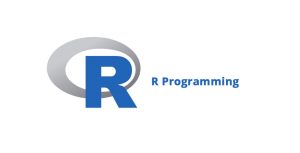
R, along with Python, is a popular data research language. It is a statistical programming language with outstanding visualization capabilities. Because of its emphasis on statistics, it is easier to deal with than other general-purpose machine learning programming languages.
This is because it includes built-in functions for common tasks that would otherwise necessitate the use of packages in multiple languages. For example, it provides built-in data types for things like vectors and matrices.
In addition to the built-in functions, R provides machine learning packages such as Lattice, DataExplorer, Caret, and Janiot. As a result, it has established itself as one of the best machine learning programming languages.
2. Java

Java is one of the most widely used machine learning programming languages in the world, owing to its ubiquity and dependability. Some of the world’s largest IT businesses utilize it to construct corporate applications. Because it is quicker than other machine learning programming languages, such as Python, Java is great for machine learning. Companies like Netflix and LinkedIn utilize it to develop machine-learning pipelines.
It works well with large data management systems like Apache Kafka as well as distributed computing frameworks like Apache Spark and Hadoop. DeepLearning4J, ELKI, JavaML, JSat, and Weka are among the deep learning tools in its package. Java’s speed, dependability, and broad library make it an excellent programming language for machine learning.
3. Julia
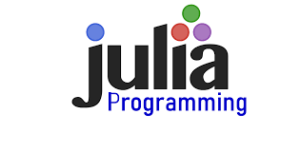
Julia is a multi-purpose programming language that is frequently used in numerical analysis and computational research. Julia, like Python, is dynamically typed, making it easier to deal with. In reality, it is intended to be as simple to use as Python.
However, it avoids Python’s performance difficulties and strives to be as fast as the C programming language. One of Julia’s benefits is that vectorized code is only slightly faster than devectorized code. This makes vectorizing code almost unnecessary.
Julia also has a plethora of packages for developing machine-learning models. Julia featured over 7400 packages at the time of writing for implementing topics like linear algebra, neural networks, importing and reading data, and data visualization. As a result, Julia is often regarded as the best and most natural substitute for Python in machine learning.
4. Lisp
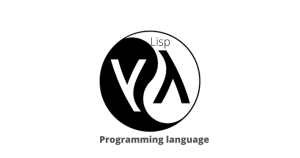
Lisp is a rapid programming language that has been in use since 1960, making it the second oldest still in use. Fortran is the oldest. Lisp has evolved over time, and several dialects have formed. Common Lisp is the most widely used. It supports both dynamic and strong typing and is multi-paradigm.
It’s ideal for AI and machine learning because it allows you to write programs that work well with symbols. Lisp is adaptable, allowing you to write code in both dynamic and strong typing paradigms. It is also quick, which cuts training time for your models. Furthermore, Lisp allows you to create your own sublanguage to deal with more complicated circumstances. It includes libraries for doing standard machine-learning tasks, such as MGL and CLML.
5. C++
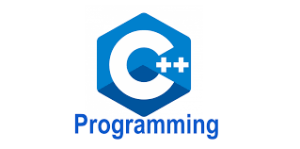
Because of how swiftly it is compiled into machine language, C++ is the world’s fastest programming language. C++ is an excellent machine-learning programming language due to its speed.
It has a large library of functions that are commonly used in machine learning. SHARK and MLPack are two examples. Indeed, the most popular Python machine learning tools, such as PyTorch and Tensorflow, are built with C++ behind the hood.
C++ helps you optimize resource utilization, such as memory, CPU, and GPU activities. As a result, if you are proficient in C++, you will be able to create more performant models while also reducing training size.
6. JavaScript

JavaScript is one of the world’s most popular machine learning programming languages. While it began as a language for scripting webpages, it has subsequently evolved into a flexible language that can be used for almost anything.
Its applications include writing server-side code, developing desktop and mobile apps, and producing machine learning models. The strength of JavaScript as a machine-learning language is its ubiquity; that is, most devices can run JavaScript code with only a browser.
JavaScript may also be used to implement speedier predictions. This is because most ML apps transmit data to the server and return predictions. As a result, the prediction speed is decreased by connection latency, which may result in a poor user experience. You may also design models that run within React Native-based mobile apps. ML5.js, Synaptic, and Brain.js are JavaScript machine learning libraries.
7. Haskell
![]()
Haskell is a very strong static typing language. Haskell provides embedded domain-specific language support, which is critical for AI research. It leverages popular algebraic structures, such as monoids and modules, to boost the efficiency of machine learning programming languages algorithms. Although Haskell is widely used in academia, many reputable firms utilize it in their projects.
8. Python
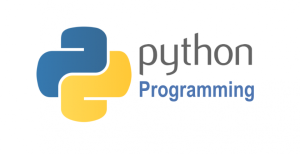
Python is by far the most widely used machine learning language. It is a general-purpose programming language that was created in 1995. Since then, it has gained popularity, becoming the most utilized programming language overall. This is not by chance; rather, Python was built to be beautiful and straightforward. This makes it simple to understand and user-friendly, even for those with no programming knowledge.
Python has a wide community and a wealth of learning materials due to its popularity. It also offers libraries for machine learning, such as Tensorflow and PyTorch, numerical computation, such as NumPy, and data management, such as Pandas. Python is extendable by libraries built in these machine learning programming languages, which makes it quicker since it can interact with applications written in C++ and C.
The majority of Python machine-learning libraries are constructed in this manner. This makes your Python code more efficient. As a result, Python is the most common machine learning language, and it is essential that you master it.
9. Golang

Go (Golang) has been a popular language due to its distinguishing features such as its open-source nature, ownership by Google, and light execution. It can handle large data sets in a more straightforward manner by executing numerous processes concurrently. Its congruence is its strong suit. It’s a system-level programming language with a built-in vocabulary.
It is regarded as one of the fastest-growing machine learning programming languages on GitHub, with a high degree of acceptability among cloud computing providers. It is prominent in the serverless computing architecture due to its similarities to C and features such as garbage collection, dynamic typing, and so on. Go is thought to be easier to learn, and its clear syntax and security make it popular among engineers.
10. Shell
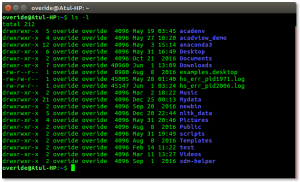
The Unix shell, a command-line interpreter, is what runs the shell programming language. Shell’s scripting machine learning programming languages and wrappers make use of its concise syntax, making it a perfect choice for developing machine learning models, algorithms, and applications.
Shell uses a defined language as a user interface to perform operations and can be quite useful in data collection and preparation via mathematical models. Shell is accessible for all operating systems, including Windows, Linux, and macOS, and provides superior portability.
Shell commands and scripts are used to gather data and prepare it for processing. It provides a simple and user-friendly method of data processing.
Final Words
Python is not going away anytime soon, owing to its popularity and ecosystem. As a result, it is a good language to master if you want to work as a machine learning engineer. It is also easy to learn compared to other machine learning programming languages and beginner-friendly. As a result, it is an excellent first language.
Following Python, C++ makes sense because the majority of Python libraries for machine learning are built in C++. This would allow you to focus as much as possible on the libraries themselves while also speeding up your Python code by expanding it in C++. Aside from that, you may use any other language you like, such as Julia or R.
